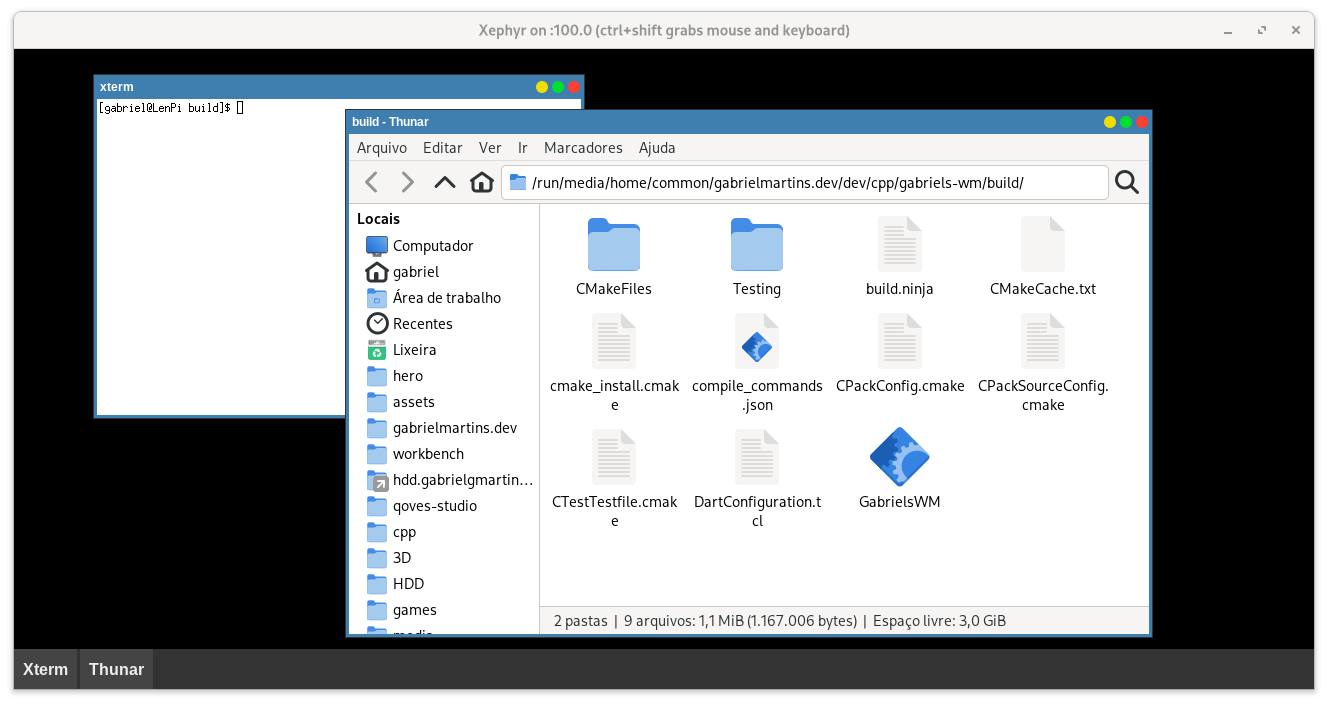Gabriel's Window Manager
Understanding Linux and C++ Through Building a Window Manager

Introduction
As a web developer with a background in C++, I sought to expand my expertise and delve into the world of Linux and low-level programming. With the goal of gaining hands-on experience and becoming a more well-rounded developer, I decided to embark on a challenging project to build my own window manager. This endeavor allowed me to not only sharpen my C++ skills but also dive into the X Window System (X11) and gain a deeper understanding of Linux desktop environments.
The Project: GabrielsWM
GabrielsWM, short for "Gabriel's Window Manager," is a personal project aimed at creating a minimalistic and lightweight window manager from scratch. The window manager is designed to work with the X Window System, which is the standard protocol for managing graphical user interfaces in Linux environments.
Learning Objectives
- C++ Mastery: Through GabrielsWM, I wanted to reinforce my C++ skills and explore various C++ features, including modern C++ standards like C++20.
- X Window System (X11): The project gave me the opportunity to understand how X11 works and how it handles graphical rendering, window management, and user input.
- Low-Level Programming: Building a window manager involves low-level programming, such as interacting with X11 APIs directly. This allowed me to gain valuable insights into system-level programming.
- Linux Environment: By working on GabrielsWM, I familiarized myself with the Linux desktop environment, including the Xorg server and various X extensions.
- Integration with External Libraries: To add advanced features to GabrielsWM, I integrated external libraries such as Cairo for improved graphics rendering.
Project Structure and CMake
To keep the project organized, I used CMake, a popular build system, to manage the build process. CMake enabled me to specify dependencies, set compiler options, and ensure a smooth build across different platforms.
The CMake file (`CMakeLists.txt`) defined the project settings, including the project name, version, and required C++ standard. It also included X11 and Cairo libraries, which were essential for interfacing with the X Window System and handling graphics rendering.Conclusion
Building GabrielsWM has been a remarkable journey of learning and exploration. By taking on this challenging project, I gained hands-on experience with C++, Linux, and the X Window System. I also discovered the intricacies of window management, event handling, and graphics rendering in a Linux environment.
Through this project, I have not only deepened my understanding of low-level programming but also gained confidence in tackling complex projects and exploring new territories in the world of software development. GabrielsWM stands as a testament to my commitment to continuous learning and my passion for honing my skills as a developer.
I am excited to share this project in my portfolio as a tangible demonstration of my dedication to personal growth and my ability to push the boundaries of my expertise. GabrielsWM is not just a window manager; it represents the journey of an aspiring developer towards mastering new technologies and creating innovative solutions.
